|
By Mark Jordan It is easy to spot and identify in late autumn. The tall deciduous trees, the oaks, the hickories and others, have but a few brown leaves still clinging to their skeleton frames. Below, on shorter plants, abundant leaves remain green. A drive in the country reveals this late season green plant growing at the edge of a woodlot, deep in a forest or in abandoned fields. It is in the fall that its abundance becomes most visible. It is exotic and invasive bush Honeysuckle. 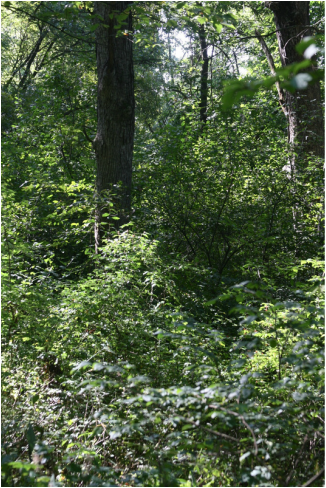 Dense Honeysuckle growth Dense Honeysuckle growth Nonnative Honeysuckles such as Amur Honeysuckle, Showy Fly Honeysuckle, Common Fly Honeysuckle and others were introduced into the United States from Eurasia more than 100 years ago. They were brought into new habitats for ornamental reasons, for erosion control and for wildlife cover. In the absence of repeated fires and in grazed and disturbed wooded areas the exotic Honeysuckles have reproduced rapidly and spread widely. 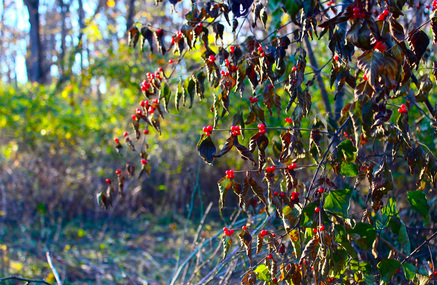 There are woodland and savanna areas now in Nachusa Grasslands where the Honeysuckle has become abundant over many decades and is disruptive to the native ecosystems. These multi-stemmed bushes can grow up to twelve feet tall and form very thick shrub layers that prevent the growth of native species by decreasing the amount of light reaching the forest floor and by using up nutrients and water in the soil. Honeysuckles are considered an allelopathic species as they release chemicals into the soil that inhibit the growth of native species. Birds that may build nests in Honeysuckle are more susceptible to predation because the Honeysuckle branches are nearer the ground than native bushes. The abundant berries, while high in carbohydrates, do not produce the fats and nutrients needed by migrating birds in the fall. I have been a steward of the East Tellabs Unit at Nachusa Grasslands since 2011. With the help of many volunteers, other stewards and the Nachusa crew, we have cut and treated thousands of Honeysuckle plants of all sizes. It is rewarding to use a pair of loppers or a saw to cut a plant near its base and treat the stump with a chemical to kill the Honeysuckle and prevent resprouting. The forest floor is exposed and sunlight may reach it for the first time in years. Other methods of attacking this invasive plant include chemically spraying the leaves, applying chemicals to the base of the plant and seasonal fires. 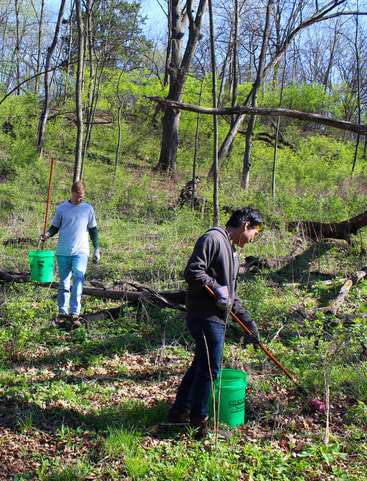 Painting the stems of Honeysuckle Painting the stems of Honeysuckle The work to decrease the Honeysuckles continues. A few hours working among the Honeysuckle can leave one tired, sweaty, sore, scratched and covered in burrs. Yet the tired and sore will go home feeling proud for doing a necessary task that makes a difference in the diversity and ecology of the woodlands and savannas. Each Saturday a Nachusa steward leads a volunteer workday. You might collect seeds, you might pull weeds, you might pile deadfall, or you might cut, treat, stack and burn Honeysuckle. 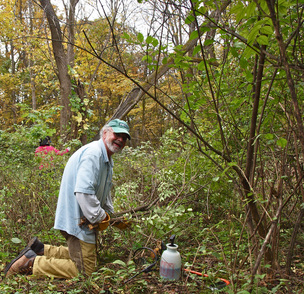 Mark Jordan Mark Jordan Text and Photography by Tellabs Steward Mark Jordan
5 Comments
James McGee
11/17/2016 08:23:38 pm
In my experience the Asian honeysuckles are some of the toughest invasive species to control. Do you need to do a lot of resprout work? It usually takes me a number of years of follow up work until more work is no longer needed.
Reply
Paul Swanson
11/25/2016 07:35:10 am
Good work! The battle against Asian honeysuckle is being fought at Nachusa one steward, one volunteer crew, and one Saturday at a time. Thanks for highlighting the many reasons for that it is important to devote time to eliminate this aggressive invasive plant from the tapestry of plants that make up the fabric of a healthy native grassland. Well written, well done!!!
Reply
Don Gladfelter
1/10/2017 09:19:36 am
Congrats on this effort. I have my own 3 acre woodland area that I try to preserve for nature and I fight the honeysuckle continuously. Can you tell me what chemical you use to treat the stems? And does it really work? I find myself cutting the same plant over and over in my effort to kill it.
Reply
James Hoyt
1/11/2017 05:09:17 pm
Good work! You can save money and herbicide by pulling the Honeysuckle by the roots next Spring when the soil gets thawed.
Reply
Nachusa Grasslands
1/26/2017 04:30:13 pm
Young, emerging honeysuckle have been pulled in early spring at Nachusa, but this is not the chosen method for larger bushes with an established root. The plants need to be quite small to easily pull, and you have to use correct posture to prevent back injury. There are typically many larger honeysuckles to remove first, and fire helps with the smaller ones. To learn more about Nachusa's honeysuckle management, read Bill Kleiman's blog post series at https://grasslandrestorationnetwork.org.
Reply
Your comment will be posted after it is approved.
Leave a Reply. |
Blog CoordinatorDee Hudson
I am a nature photographer, a freelance graphic designer, and steward at Nachusa's Thelma Carpenter Prairie. I have taken photos for Nachusa since 2012. EditorJames Higby
I have been a high school French teacher, registered piano technician, and librarian. In retirement I am a volunteer historian at Lee County Historical and Genealogical Society. Categories
All
Archives
January 2024
|
CONNECT WITH US |
|
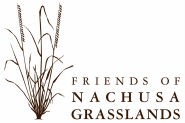

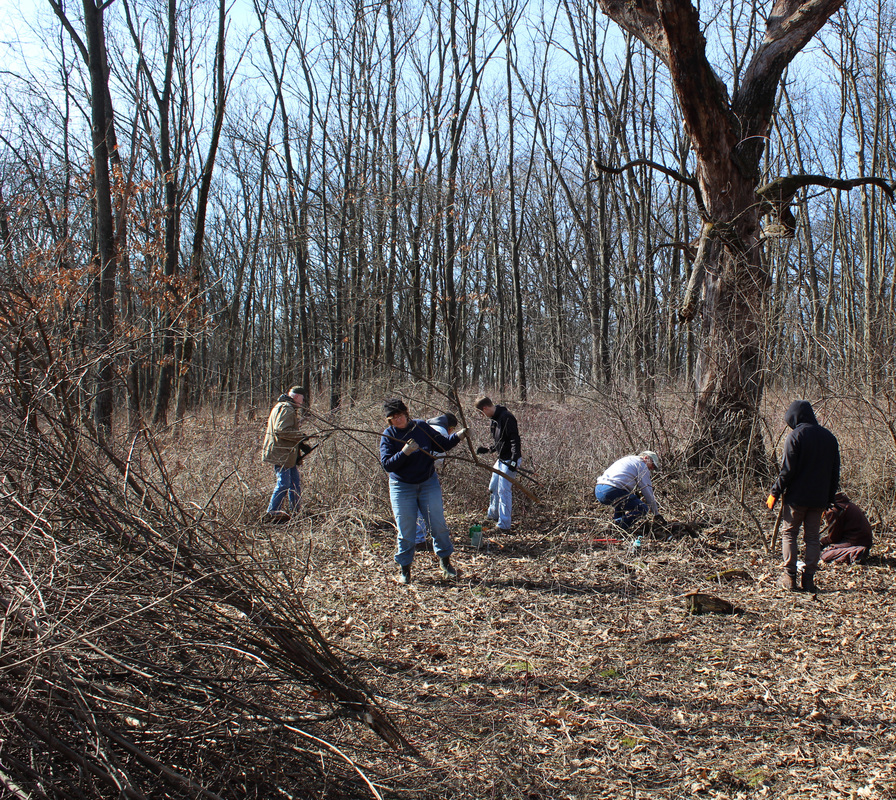
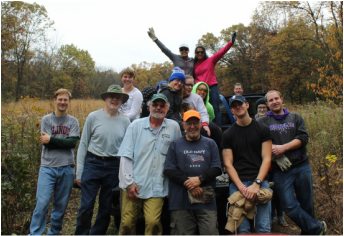
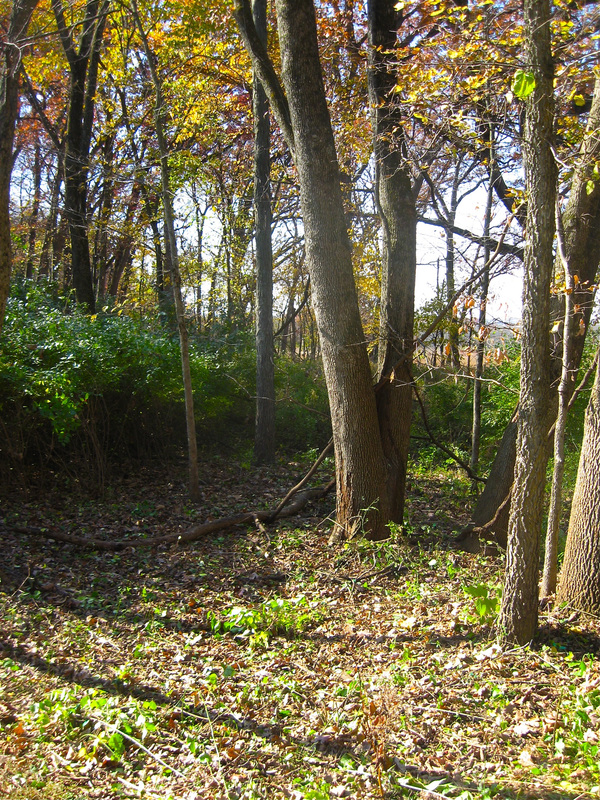
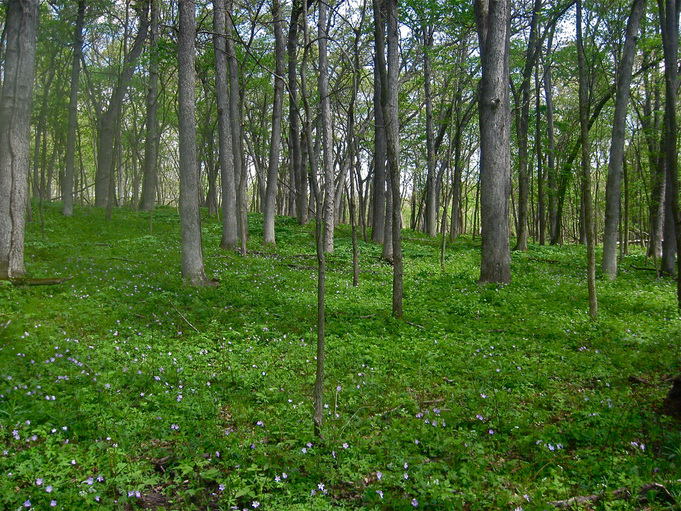
 RSS Feed
RSS Feed